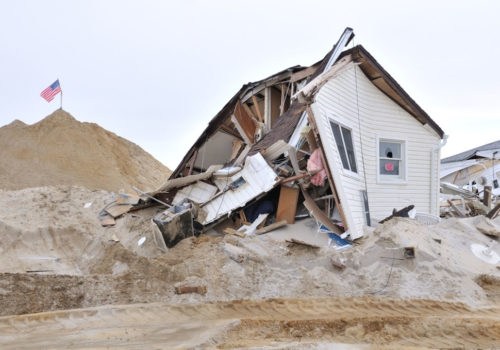This project is study of a unique place in the American landscape that appeals to my vernacular taste and sense of style and order.
The cottages at Ocean Beach (NJ), some might say, are nothing more than oversized trailers. They are laid out in a symmetrical grid in three units, with the democratic and institutional sounding names Unit I, II, III, that total over 2,000 cottages. The streets, still made up of sand in Unit III, adds to the sparse and strong sense of place.
Photographing there in the off season allows me to de-contextualize the cottages from their vacation purpose. From a formal perspective, color, form and spatial relationships are studied. Here color helps to create individuality among uniformity in the architectural landscape. I have temporarily “borrowed” select cottage interiors to conceptually create fragmented self portraits using found or personal items. This allows me to explore the project subtexts of time, memory, and identity.
The interiors have hardly any decorations creating an abstract time stamp and few clues as to who the owners are. The bedrooms are utilitarian in nature and minimal in size to where they straddle the line between intimate and claustrophobic.
As a photographer I am interested in the cottages still showing signs of a bygone era when wood paneling, vibrant colors, and kitsch decorations were the order of the day. I always felt it was a race against time to visually preserve the cottages. That was based on the rapid pace of cottages being renovated and modernized to attract more potential vacationers on the competitive rental market.
Unfortunately, Ocean Beach was one of the hardest hit when Superstorm Sandy made landfall in late October, 2012. 90% of the ocean facing cottages at Unit III were destroyed and have since been demolished. Many more were destroyed from the inside by standing water when the ocean and bay waters met on the thin barrier island. As the project was completed before the storm my initial instinct was that I didn’t want to document the post-storm landscape. Not having access for two months helped change my mind and better understanding of the historical importance, too.
Gone though was the quiet and solitary work process I had come to love. Now the place was bustling with homeowners, police patrols, curious day-trippers, demolition, construction, and utility companies. And gone was the feeling of time standing still at Ocean Beach. I guess it’s true, nothing lasts forever!
Douglas Ljungkvist
BOOK
Ocean Beach
Photographs by Douglas Ljungkvist
introductions by Harvey Benge and Steve Bisson
Publisher: Kehrer Verlag
108 pages, 92 color ills.
English
ISBN 978-3-86828-403-4
Euro 29,90
http://www.douglasljungkvist.com
http://www.kehrerverlag.com
















